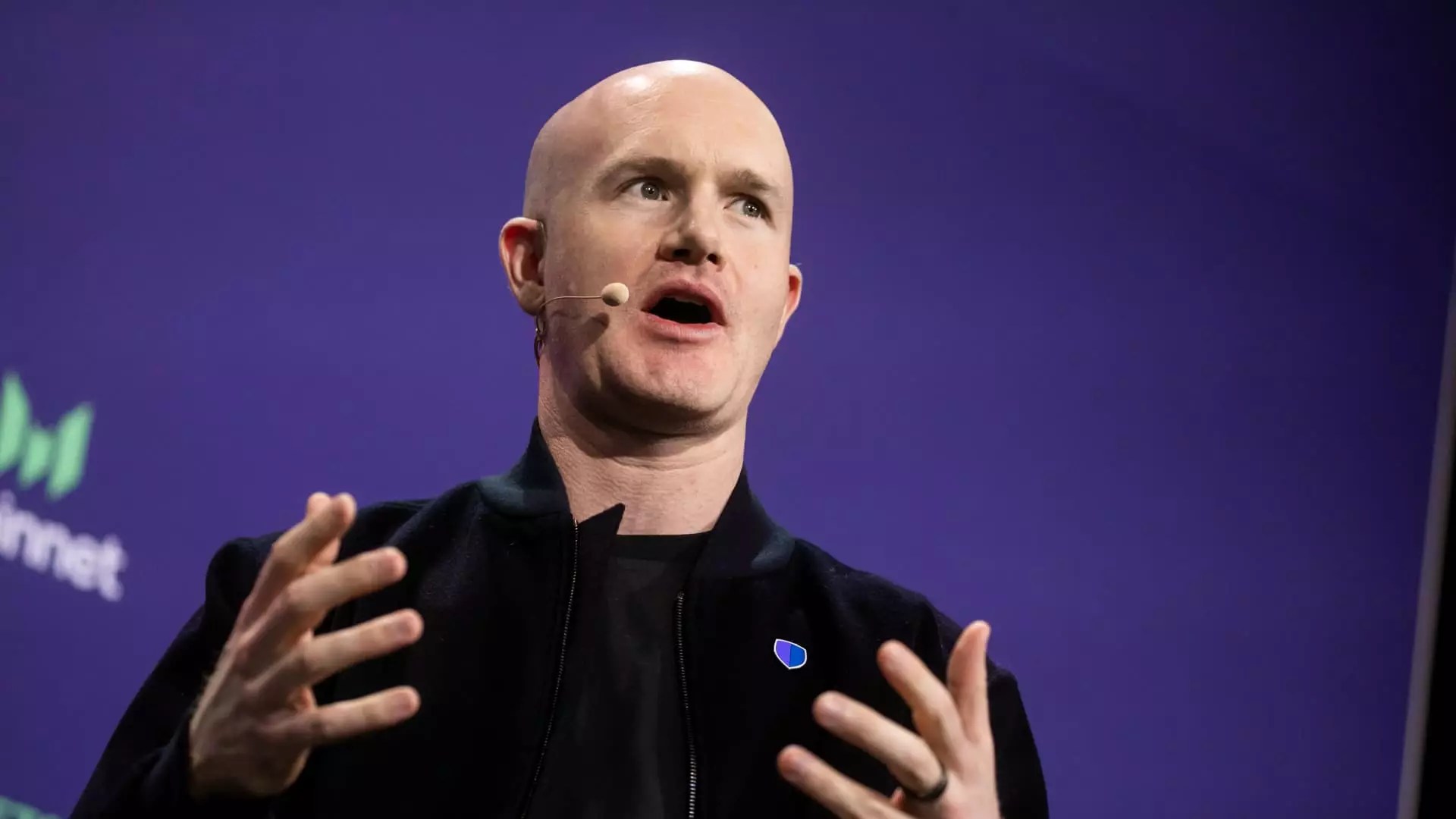In the expanding universe of cryptocurrency, Coinbase stands at the precipice of revolutionizing not just digital currency but the entire financial services landscape. CEO Brian Armstrong has boldly proclaimed his vision: within the next decade, Coinbase aims to be the premier financial services app globally, a declaration that holds profound implications not only for the company but for the entire industry.
The Crypto Revolution: Transforming Financial Services
At the core of Armstrong’s assertion is the transformative potential of cryptocurrencies and blockchain technologies. He emphasizes a critical point: “crypto is eating financial services.” This reflects a noticeable shift where traditional banking methodologies may soon be obsolete, transforming into more efficient, decentralized models that empower individuals and small businesses alike. As legacy institutions slowly integrate blockchain technology into their operations—largely due to loosening regulations post-Trump administration—companies like Coinbase are perfectly positioned to lead this change.
The massive influx of institutional interest signals a shift in sentiment that cannot be ignored. Major financial players are finally realizing that crypto isn’t just a passing trend; it represents a fundamental evolution of how we think about and use money. With organizations like BlackRock, Stripe, and PayPal now collaborating with Coinbase, the platform is set to become the backbone of a transformative financial ecosystem.
Stablecoins: The Unsung Heroes of Financial Transition
Armstrong’s focus on stablecoins as a major revenue driver for Coinbase is not just insightful; it highlights a crucial transitional phase in financial services. Traditional assets are being tokenized, and stablecoins provide a bridge for conventional banks to enter the crypto space without the wild volatility associated with cryptocurrencies like Bitcoin or Ethereum. In the first quarter, revenue linked to stablecoins jumped 50%, illustrating that the market is ready for more seamless integration.
However, Armstrong raises valid concerns regarding banks that may wish to create their own stablecoins. While the desire for autonomy is understandable, he argues for the importance of interoperability. This stance isn’t merely strategic; it’s indicative of a broader understanding of how financial systems should operate. When banks collaborate and create stablecoins that can interact with one another, the efficiency of transactions and the overall stability of the ecosystem are greatly enhanced.
The Regulatory Landscape: A Double-Edged Sword
Coinbase’s ascension coincides with a favorable regulatory environment that is gradually softening its stance on cryptocurrencies. With agencies like the Office of the Comptroller of the Currency (OCC) now enabling U.S. banks to engage with crypto assets more liberally, it’s clear that the government recognizes the necessity of evolution in financial services. The previous hesitance surrounding crypto dives into the depths of outdated fears that no longer align with the technological realities we face today.
As the regulatory framework solidifies and matures, Coinbase stands to benefit tremendously by positioning itself as not just a crypto exchange but as a comprehensive financial services provider. The company’s adaptability to changing regulations allows it to thrive in an ever-evolving market. Instead of resisting change, Coinbase embraces it, ensuring its relevance in the years to come.
Future Predictions: Bank and Crypto Collaborations
Looking ahead, the undeniable integration of banks and cryptocurrency services suggests that almost every major financial institution will eventually harness this technology. Armstrong’s contention that “every major bank is going to be integrating crypto” may very well turn into a prescient reality. Some traditional banks are already exploring the launch of a stablecoin, and as regulations become clearer, these ventures will likely materialize.
The potential partnerships between Coinbase and banking institutions could represent a paradigm shift. By providing custodial solutions and supporting the issuance of stablecoins, Coinbase could pave the way for a significantly altered financial landscape, one that values speed, transparency, and decentralization over the archaic processes of today.
Coinbase’s Robust Roadmap
What stands out in Armstrong’s vision is the roadmap—extending beyond mere trading and payments into richer offerings that encompass diverse financial instruments. As he posits, “all these asset classes… are coming on chain.” This indicates a future where everything from money market funds to real estate could potentially be managed through blockchain technologies, streamlined through a singular, user-friendly application.
Such ambitions reveal a company not just prepared for the future, but one actively shaping it. Coinbase’s proactive approach lies not merely in selling cryptocurrencies but in creating a holistic ecosystem—an approach that places them ahead of the curve as financial services continue to evolve.
In witnessing this transition, it is instrumental to understand that Coinbase is poised to disrupt the status quo with a clear vision, a robust strategy, and an unwavering belief in the power of cryptocurrency to redefine the financial landscape.


Leave a Reply